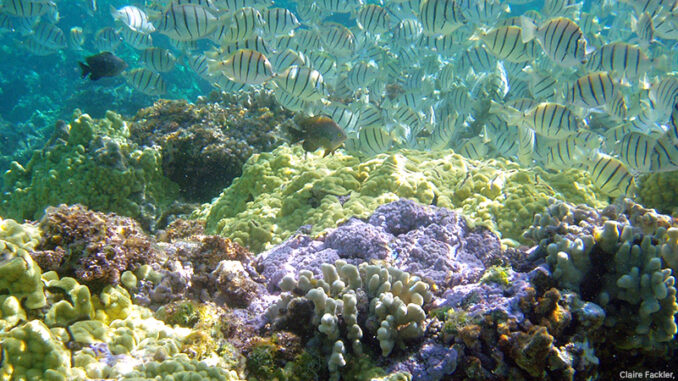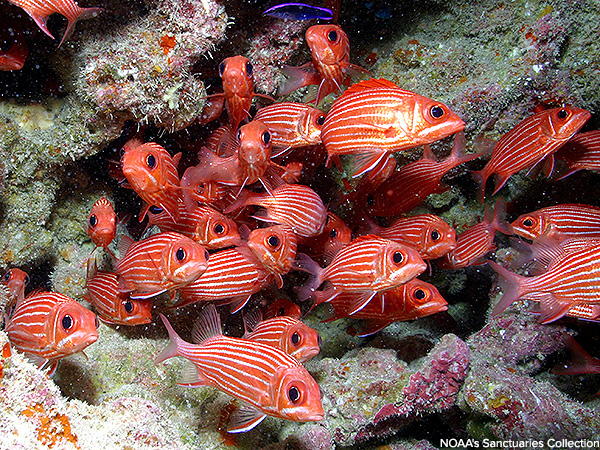
There is a cluster of uninhabited islands and coral reefs located in the Pacific Ocean that collectively make up the Papahānaumokuākea Marine National Monument. This land and the waters that surround it currently encompasses around 140,000 square miles. Last month, President Obama announced that he has signed legislation to expand its boundaries to the north and west to nearly 600,000 square miles. This act will make the area the largest marine wildlife reserve in the world. This week, btw explores the unique species of animal and plant life and archaeological artifacts that make up this corner of the world, as well as the history of the legislation that made it possible.

An International Treasure (with Actual Sunken Treasure!)
The Papahānaumokuākea Marine National Monument is home to around 7,000 different species, many of them that only exist in this part of the world. These include 24 species of whales and dolphins (some of them endangered), five protected kinds of sea turtles and millions of tropical sea birds. However, there are very few people. The islands are uninhabited and visitors are subject to very strict protocols in order to protect the fragile ecosystem. Because it is so isolated, its 4,500 square miles of coral reefs are considered the most extensive as well as the healthiest in the world. However, effects of over-fishing and pollution are threatening these oceans.
Along the ocean floor of the expanded waters lays the wreckage of shipwrecks going back several generations. Archaeologists and historians suspect there are more than 60 vessels that have been known lost in this area, and as many aircraft sites, five of them World War II-era aircraft carriers. The Papahānaumokuākea Marine National Monument is greatly invested in its maritime heritage legacy. In 2002, it began an extensive survey of the area and hopes that the expanded monument will help expand its scope.
Invoking the Antiquities Act
Earlier this year, btw recognized the 100th anniversary of the National Park Service The law responsible for that effort, the Antiquities Act of 1906, is the same legislation used by the Obama Administration to expand Papahānaumokuākea. The first president to engage measures to protect the Northwestern Hawaiian Islands was Theodore Roosevelt. He created the Hawaiian Islands Bird Reservation in 1909 through an Executive Order. In 2006, President George W. Bush invoked the Antiquities Act and designated the islands and surrounding waters a national monument. He formally changing the name to Papahānaumokuākea, after the Hawaiian goddess Papahanaumoku and her husband Wakea.
Hawaiian Senator Brian Schatz is responsible for formally proposing the most recent expansion. He believes it will “replenish stocks of ‘ahi [tuna], promote biodiversity, fight climate change, and give a greater voice to Native Hawaiians in managing this resource.” Over the course of his two terms in office, Obama has now formally protected millions of acres of significance, more than any other American president.
